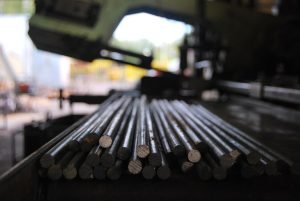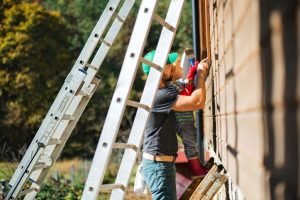Last Updated on March 4, 2024 by teamobn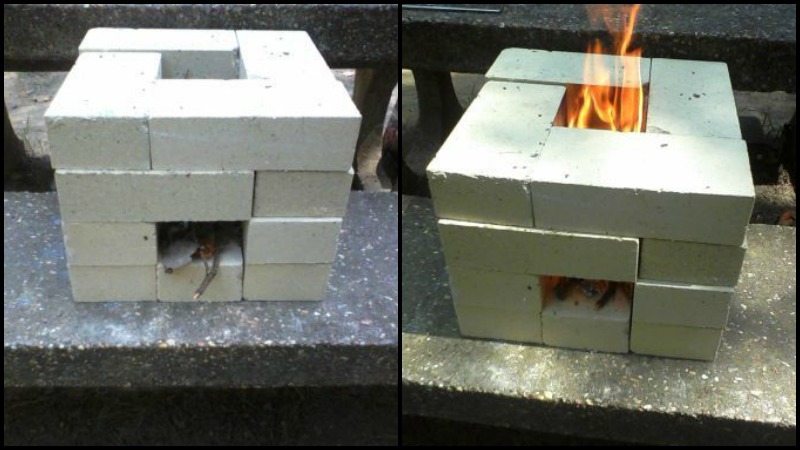
If you are looking for a temporary, but easy-to-build rocket stove, then you have come to the right place. In just a few simple steps, you can have your very own rocket stove that will make cooking outdoors a breeze. Plus, it’s a great way to save money on fuel costs.
Brick rocket stoves are not only a great way to cook food, but they also add value and character to a home. They have been used by people for thousands of years and are now making a comeback in the mainstream.
More and more people are making these traditional-style ovens because they add value and character to a home as well as a great atmosphere for outdoor gatherings.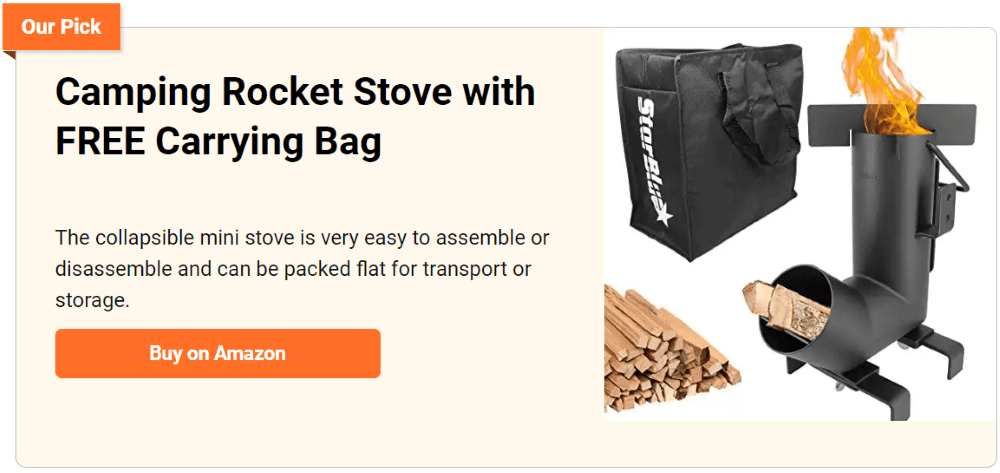
A brick rocket stove can be made for as low as $6.08, depending on where you source your material. You can look for salvaged bricks — even different kinds of bricks as long as they are all close to the same size.
The cost of the bricks will vary depending on the type of bricks you use. You can also use different kinds of bricks as long as they are all close to the same size.
The beauty of a rocket stove is that it is extremely fuel-efficient, so it is perfect for those who want to save money on their energy bills.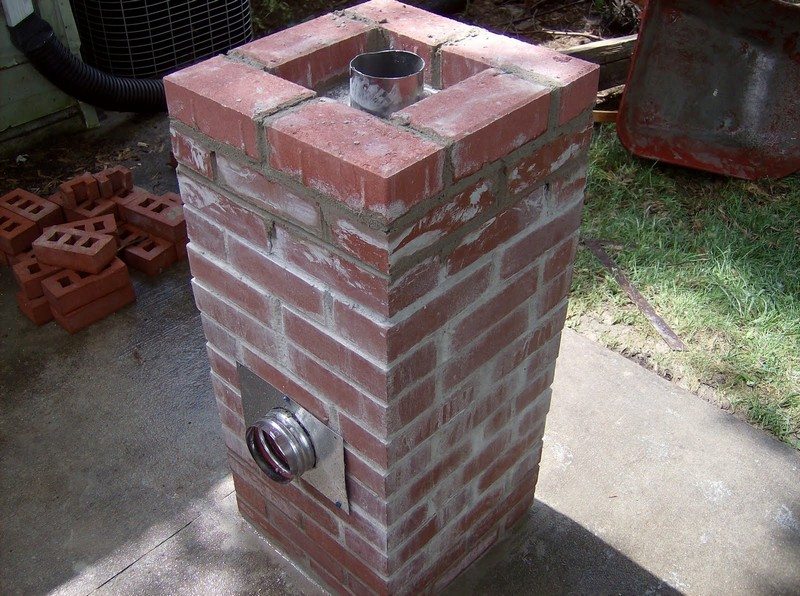
This DIY stove is very easy to make. All you have to do is stack the brick pieces such that you have an opening for feeding some fuel and a fire chamber.
It is a great technique to learn which you can use in case of an emergency or after a natural calamity. Pick up pieces of bricks, arrange them and you have something to cook or boil available food with.
Advantages of Brick Rocket Stoves: A Sustainable Solution for Outdoor Cooking and Heating
Brick rocket stoves have gained popularity as a sustainable and cost-effective alternative for outdoor cooking and heating. These simple yet efficient appliances offer numerous advantages over traditional stoves and fire pits.
From their eco-friendly design to their affordability and versatility, brick rocket stoves provide a practical solution for individuals seeking to reduce their environmental impact while enjoying the benefits of outdoor living. This article explores the various advantages of brick rocket stoves in detail, highlighting their importance in sustainable living practices.
1. Eco-Friendly Operation
One of the primary advantages of brick rocket stoves is their eco-friendly operation. Unlike traditional open fires or charcoal grills, rocket stoves are designed to burn wood efficiently, resulting in minimal smoke and emissions.
The combustion process in a rocket stove is highly efficient, with flames directed vertically through a narrow combustion chamber. This design maximizes heat transfer and minimizes heat loss, resulting in cleaner and more efficient combustion compared to conventional stoves.
2. Reduced Fuel Consumption
Brick rocket stoves are renowned for their ability to reduce fuel consumption significantly. The design of a rocket stove allows for the complete combustion of wood, meaning that less fuel is needed to generate the same amount of heat compared to traditional stoves.
By burning wood more efficiently, rocket stoves help conserve natural resources and reduce reliance on fossil fuels. This makes them an excellent choice for individuals seeking to minimize their carbon footprint and promote sustainable living practices.
3. Cost-Effective Solution
Another advantage of brick rocket stoves is their cost-effectiveness. Unlike elaborate outdoor cooking or heating appliances, rocket stoves can be constructed using basic materials such as bricks, mortar, and metal grates. These materials are often readily available and inexpensive, making rocket stoves an affordable option for individuals on a budget.
Additionally, the efficient combustion of wood in a rocket stove means that less fuel is required, further reducing operating costs in the long run. Overall, brick rocket stoves offer an economical solution for outdoor cooking and heating needs.
4. Versatility and Adaptability
Brick rocket stoves are highly versatile and adaptable to various outdoor environments and cooking styles. Whether used for grilling, boiling, or simmering, rocket stoves can accommodate a wide range of cooking methods and utensils. Their compact size and portable nature make them suitable for backyard barbecues, camping trips, and outdoor events.
Additionally, rocket stoves can be customized and modified to suit specific preferences and requirements. From adding additional features such as grills and hotplates to incorporating decorative elements, brick rocket stoves offer endless possibilities for customization.
5. Minimal Environmental Impact
In addition to their efficient fuel consumption, brick rocket stoves have minimal environmental impact compared to conventional stoves and fire pits. By burning wood cleanly and efficiently, rocket stoves produce fewer emissions and pollutants, contributing to improved air quality and reduced environmental degradation.
Furthermore, the use of locally sourced and sustainable materials in the construction of rocket stoves further minimizes their environmental footprint. Overall, brick rocket stoves represent a sustainable and environmentally friendly alternative for outdoor cooking and heating.
Brick rocket stoves offer numerous advantages for individuals seeking a sustainable and cost-effective solution for outdoor cooking and heating. From their eco-friendly operation and reduced fuel consumption to their affordability, versatility, and minimal environmental impact, rocket stoves provide a practical and environmentally conscious alternative to traditional stoves and fire pits.
By harnessing the power of efficient wood combustion, brick rocket stoves enable individuals to enjoy the benefits of outdoor living while minimizing their environmental footprint.
What are the materials needed to make a brick rocket stove?
If you plan to use this brick rocket stove in your backyard on an ongoing basis, it will pay you to buy good-quality fire bricks that are designed to withstand regular cycles of heat and cold. If you have some, you can also make it more permanent by joining bricks with excess cement from your previous projects!
Materials:
- 16 Bricks
- Wire Mesh (optional)
- Scrap Wood / Twigs and Branches
- Dutch Oven Trivet / Extra Bricks — for placing your pan on top of the fire
How to Make Your Brick Rocket Stove
Step 1: Pile up the bricks
- To create your brick rocket stove, start by piling up the bricks, leaving a hole in the centre. Once you have the desired amount of bricks, use a mortar to bind them together.
- Once the mortar has dried, your brick rocket stove is ready to use!
- This will create the foundation for your stove and leave a hole in the centre. By doing this, you are ensuring that your rocket stove will be durable and long-lasting.
- This structure will allow heat to build up and be directed outwards, providing you with an efficient and eco-friendly way to cook your food.
Step 2: Add a piece of brick outside
- The piece of brick will be the layer for the small wood to be used for your brick rocket stove. You will need to make sure that the bricks can fit snugly together so that there are no gaps for the heat to escape.
We can now start the fire and enjoy cooking ![]()
Thanks to Survival Common Sense for sharing tips and strategies on how to make a brick rocket stove.
Click on any image to start the lightbox display. Use your Esc key to close the lightbox. You can also view the images as a slideshow if you prefer ![]()
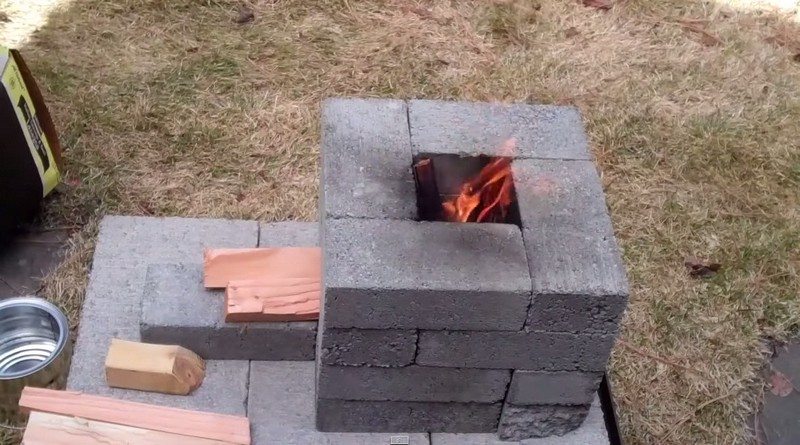
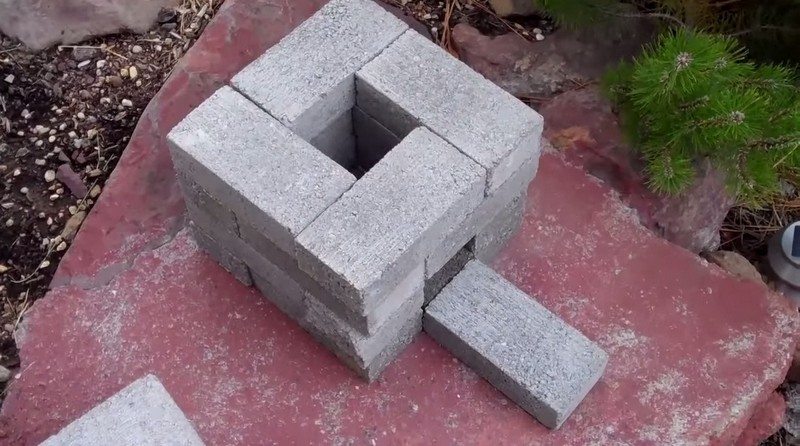
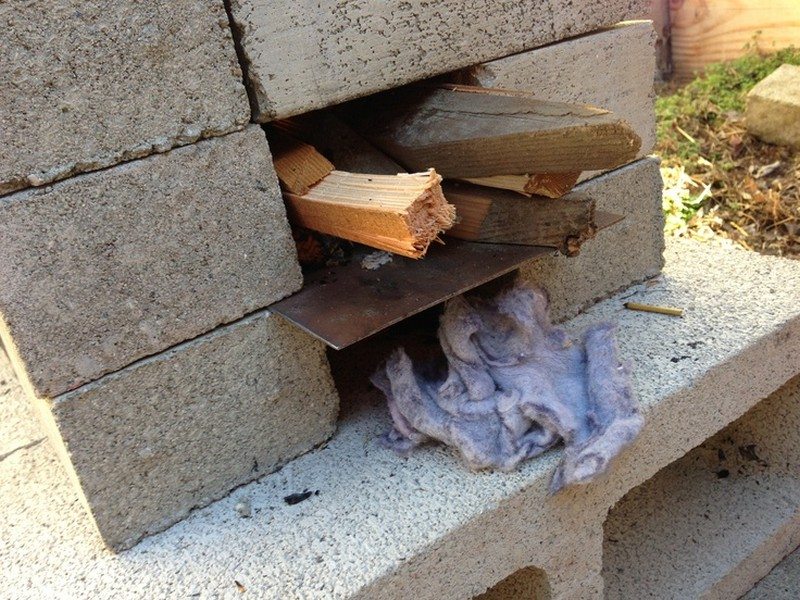

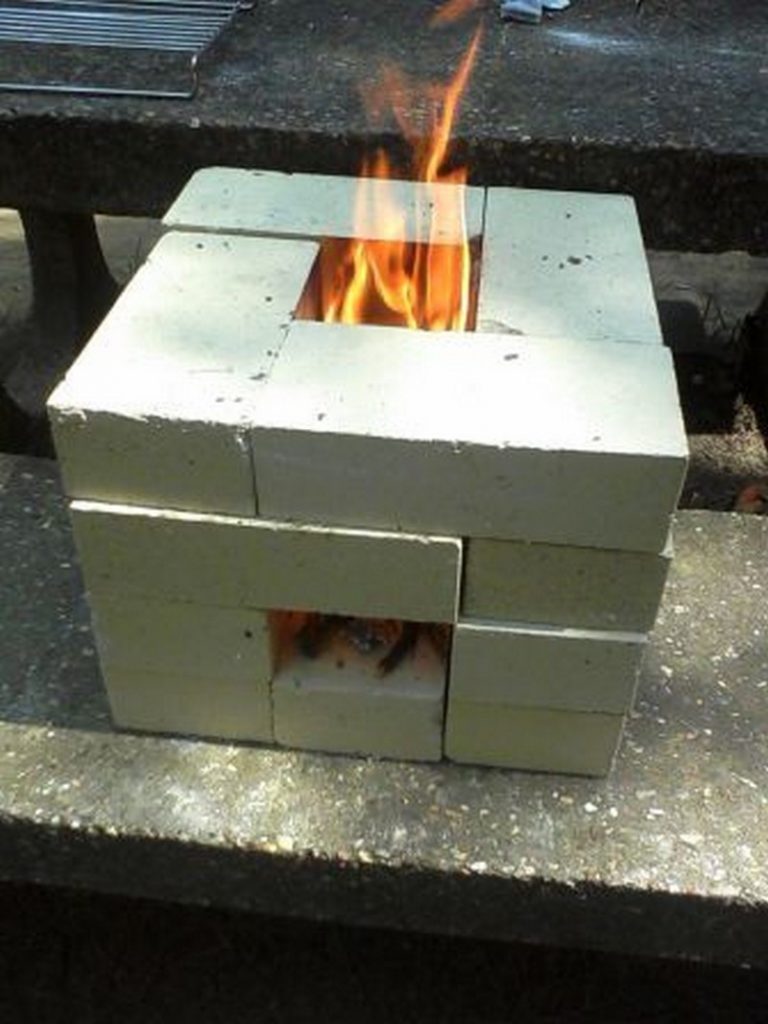
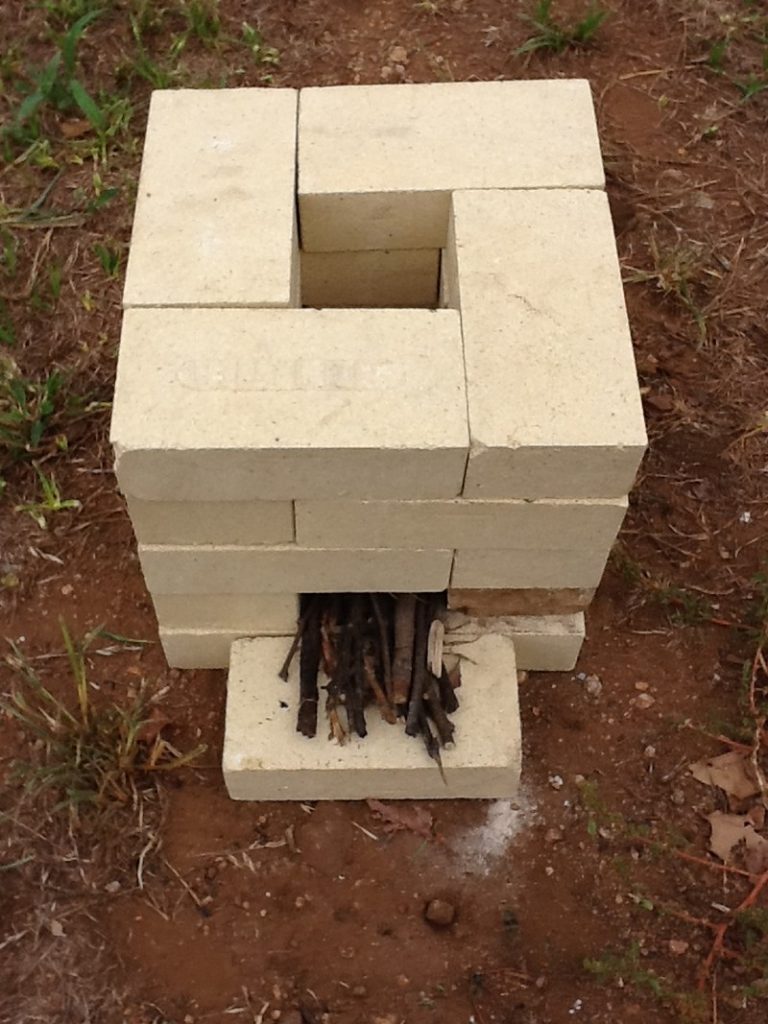

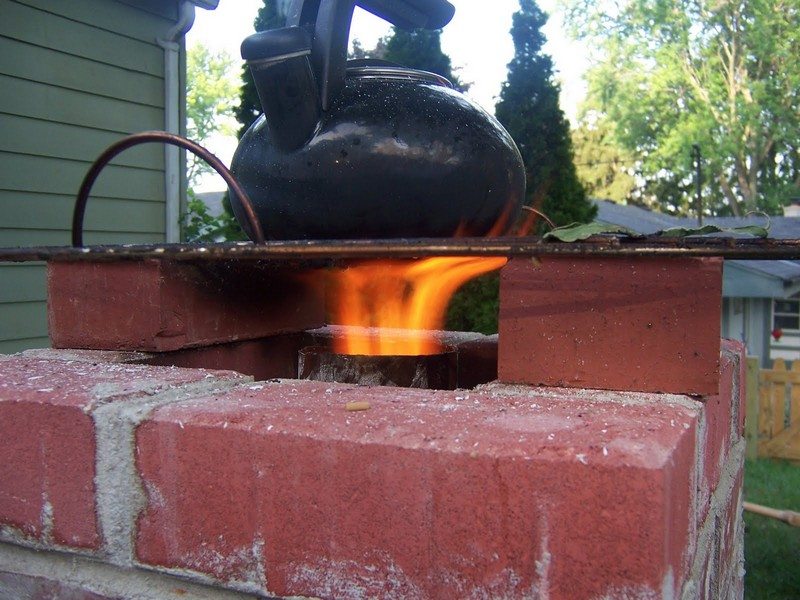
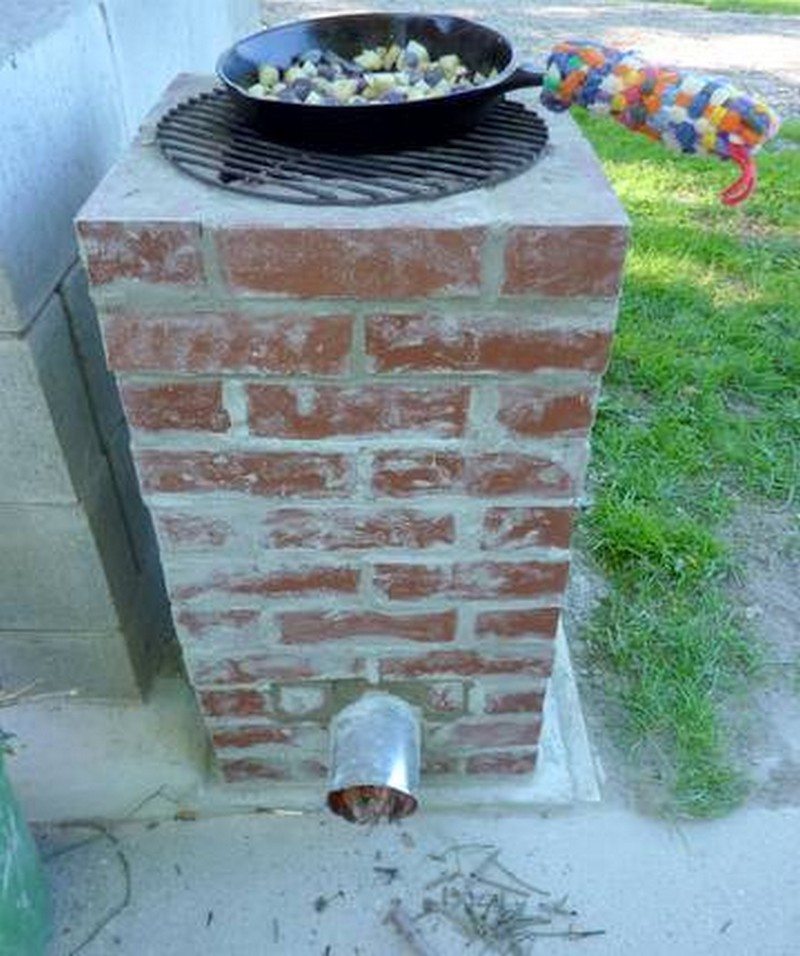
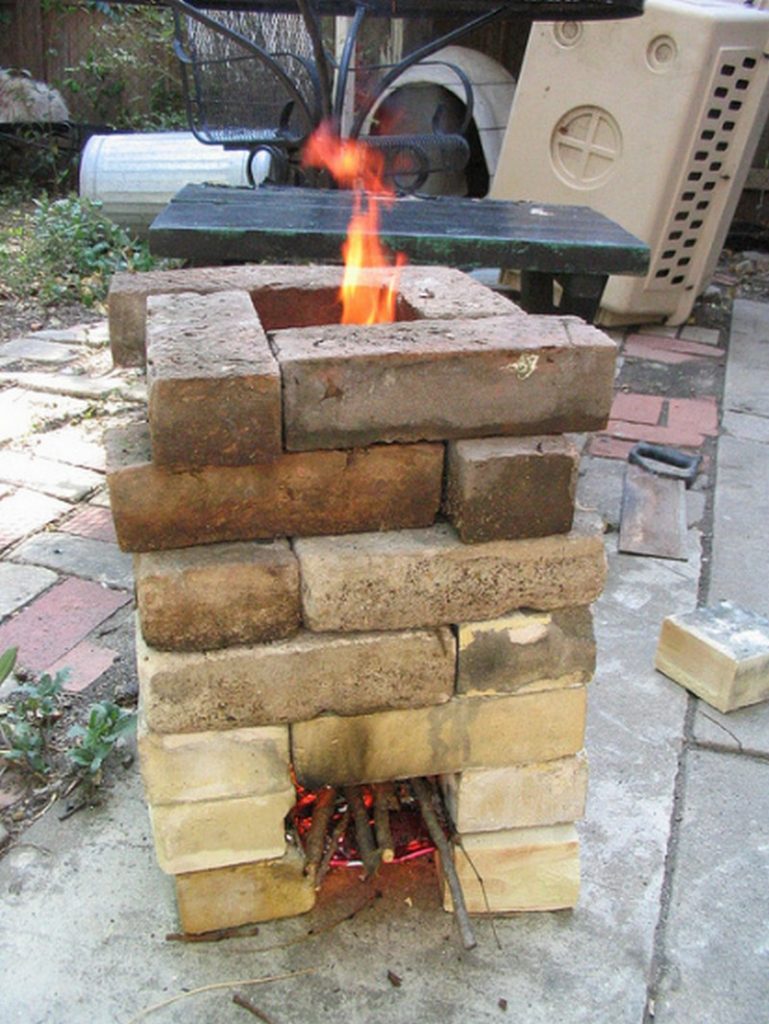
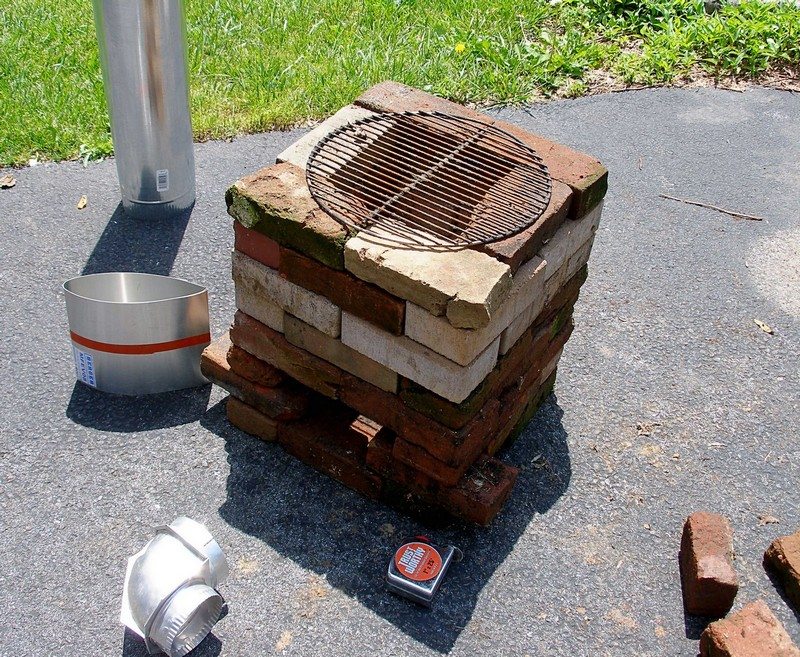
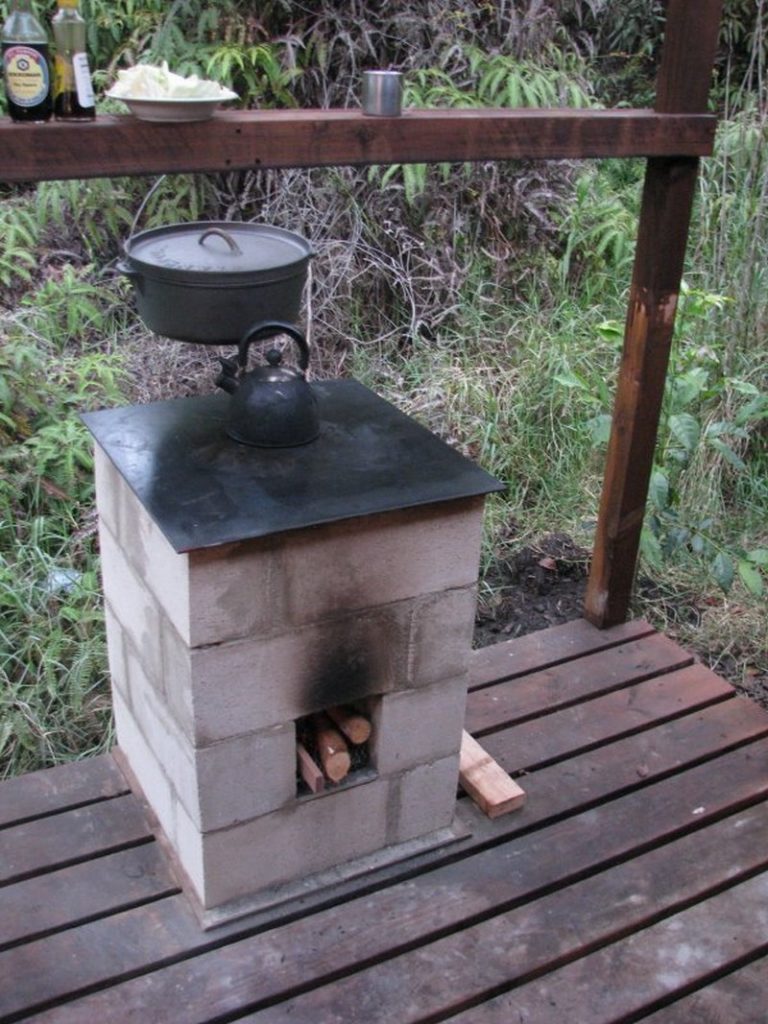
If you liked this, you might also like these outdoor kitchen ideas…
Safety Precautions and Maintenance Guide for Brick Rocket Stoves
Brick rocket stoves are popular for their efficiency and simplicity, but safety precautions are essential during construction and maintenance to ensure safe operation. This comprehensive guide outlines safety measures for building and using brick rocket stoves, along with maintenance tips to prolong their lifespan and functionality.
Safety Precautions for Building a Brick Rocket Stove:
1. Site Selection
- Choose a stable, level surface away from flammable materials, buildings, and overhanging branches.
- Ensure adequate ventilation to prevent smoke buildup and carbon monoxide poisoning.
2. Personal Protective Equipment (PPE)
- Wear gloves, safety goggles, and a dust mask to protect against cuts, debris, and airborne particles while handling bricks and mortar.
3. Use Fire-Safe Materials
- Select firebricks or heat-resistant bricks designed for high temperatures.
- Avoid regular bricks or concrete blocks, as they may crack or explode under intense heat.
4. Proper Bricklaying Techniques
- Stack bricks securely and evenly to prevent collapse during construction.
- Use a level to ensure the stove is plumb and square for stability.
5. Fireproof Mortar
- Apply refractory mortar or fireclay mortar sparingly between bricks to prevent excessive heat buildup and cracking.
- Allow the mortar to cure for at least 24-48 hours before lighting the stove.
6. Leak Testing:
- Conduct a leak test by lighting a small fire and observing for smoke leaks from the joints.
- Seal any leaks with additional mortar to ensure a tight seal.
Maintenance Tips for Brick Rocket Stoves:
1. Regular Cleaning
- Remove ash and debris from the stove after each use to prevent blockages and maintain proper airflow.
- Use a wire brush or scraper to clean the cooking surface and remove residue.
2. Inspect for Damage
- Regularly check for cracks or damage to the bricks and mortar.
- Repair any cracks promptly to prevent further deterioration and maintain structural integrity.
3. Reapply Mortar
- Over time, mortar may degrade due to exposure to heat and weather.
- Periodically check mortar joints and reapply mortar as needed to maintain a tight seal.
4. Monitor Airflow
- Ensure air intake and chimney are free from obstructions to maintain proper airflow.
- Remove any debris or blockages that may restrict airflow and affect combustion efficiency.
5. Chimney Inspection
- Inspect the chimney for creosote buildup, which can increase the risk of chimney fires.
- Clean the chimney regularly using a chimney brush to remove creosote and soot deposits.
Building and maintaining a brick rocket stove requires careful attention to safety and regular upkeep to ensure safe and efficient operation. By following these safety precautions during construction and implementing maintenance practices, you can enjoy the benefits of a reliable and efficient cooking appliance while minimizing safety risks and prolonging the stove’s lifespan.
The Wrap Up
The brick rocket stove stands as a symbol of sustainable innovation, offering a simple yet powerful solution to the challenges of traditional cooking methods. Through its efficient design and use of readily available materials, this eco-friendly appliance has the potential to transform the way we cook, reducing fuel consumption, minimizing environmental impact, and promoting self-reliance.
As we conclude our exploration of the brick rocket stove, it’s clear that its benefits extend far beyond its humble appearance. From its ability to cook meals and boil water to its versatility in heating spaces and generating electricity, the brick rocket stove represents a versatile and practical solution for communities worldwide.
One of the most significant advantages of the brick rocket stove is its accessibility. Unlike complex and expensive cooking technologies, the brick rocket stove can be constructed using basic materials and simple construction techniques. This accessibility makes it a viable option for communities worldwide, particularly those in rural or off-grid areas where access to modern cooking appliances may be limited.
Furthermore, the brick rocket stove promotes a sense of self-reliance and empowerment among its users. By enabling individuals to take control of their energy consumption and reduce their reliance on fossil fuels, it fosters a more sustainable way of life. Whether used for everyday cooking or as a backup during emergencies, the brick rocket stove offers peace of mind and security in an uncertain world.
As we look to the future, the brick rocket stove holds immense potential to drive positive change and shape a more sustainable society. By embracing this simple yet powerful technology, individuals and communities can reduce their environmental footprint, improve their quality of life, and contribute to a more resilient and equitable world for all.
Frequently Asked Questions
1. Is it safe to use a brick rocket stove?
Yes, when built and operated correctly, brick rocket stoves are safe to use. However, it is essential to follow proper safety precautions, such as ensuring the stove is stable and securely constructed, keeping flammable materials away from the stove, and using appropriate safety gear when handling hot surfaces.
Exercise care when handling fuel for the brick rocket stove. Store combustible materials in a safe location away from heat sources and ignition points. Use appropriate containers for fuel storage and avoid overfilling to prevent spills or leaks.
Be prepared for emergencies by keeping fire extinguishing equipment nearby. Have a functioning fire extinguisher rated for the types of fires likely to occur, such as Class A (wood, paper) and Class B (flammable liquids). Additionally, establish an evacuation plan and ensure all occupants know how to respond in case of fire.
2. How much does it cost to make a brick rocket stove?
The cost of making a brick rocket stove can vary depending on factors such as the availability of materials and local market prices. However, the basic materials required for this DIY project, including bricks, mortar, and metal grates, are relatively inexpensive and can typically be acquired for a reasonable price.
Metal grates or grills are used to support the cooking surface and allow air to circulate beneath the fuel. The cost of metal grates can vary depending on factors such as size, material, and quality. Basic metal grates suitable for a brick rocket stove can range from a few dollars for smaller sizes to $20 or more for larger or higher-quality options.
Depending on your design preferences and cooking needs, you may choose to invest in optional accessories such as a chimney cap, cooking grate, or heat-resistant paint. These accessories can add to the overall cost of the project but are not always necessary for basic functionality.
3. What can you cook on a brick rocket stove?
Brick rocket stoves are versatile and can be used to cook a wide range of foods, including grilled meats, vegetables, soups, stews, and more. The efficient heat output and adjustable cooking surface make rocket stoves suitable for various cooking methods, from grilling and frying to boiling and simmering.
The rapid heating provided by the combustion chamber reduces cooking times and conserves fuel, making it a practical choice for outdoor cooking.
The adjustable airflow of a brick rocket stove allows for precise control of the heat, making it suitable for simmering sauces, curries, and other dishes that require low, steady heat over an extended period.
4. How long does it take to build a brick rocket stove?
Building a brick rocket stove can typically be completed in a day or two, depending on factors such as the complexity of the design and the individual’s level of experience with DIY projects. With the right materials and tools, constructing a basic brick rocket stove should be a relatively straightforward process.
5. Can you customize your brick rocket stove?
Yes, brick rocket stoves can be customized to suit individual preferences and requirements. From adding additional features such as grills and hotplates to incorporating decorative elements or modifying the design to suit specific cooking needs, the versatility of brick rocket stoves allows for a range of customization options.



